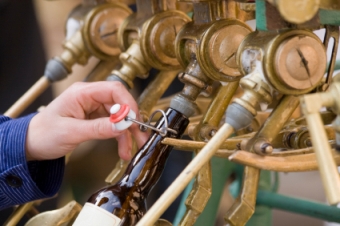

3 for chiller/trub losses to the counterflow. 3 gallons as the MLT deadspace for Lucas's tun, and another. Use the same equipment every time if you can. Figure out (as precisely as you can) how much you're collecting and how much you're leaving behind. I found that I started hitting (or getting close to) my numbers when I began keeping closer track of my volumes. There's no question that it takes some tweaking for every single recipe that's probably my biggest annoyance with brewsmith. Some may disagree, but I believe this is a logical approach.I get great results with beersmith, and consistently am within 5 or so percent of my numbers. I have a dead space of 2 gallons in my kettle, so if I have 13 gallons post-boil, post-chill in my kettle, only 11 gallons makes it to the fermenters (beersmith is basically saying that the wort density changes due to this reduced volume, which is incorrect if you stir and homogenize the wort before racking since you're transferring both sugar and water).

In terms of your OG after you boil, BeerSmith utilizes the "batch size" (aka vol into fermenter) - I also find this inaccurate, so I use the post-boil, post-chill volume in the brew kettle (BrewCipher uses this too I believe). The theoretical maximum potential extract is lowered this way (so whatever you actually obtain will be closer to the max and you'll have higher efficiency). I use CGAI since I'm milling my grain at 0.045" (you want to go a little coarser for recirculating systems like mine to avoid channeling), which takes into account the coarser crush and moisture.

BeerSmith uses FGDB, which is basically a congress mash consistency (ground to a powder) - this can create potential extract amounts that aren't really attainable for homebrewers. BeerSmith does a few things that I don't really agree with and by recognizing them (if you don't already) you can increase your efficiency a little.


 0 kommentar(er)
0 kommentar(er)
